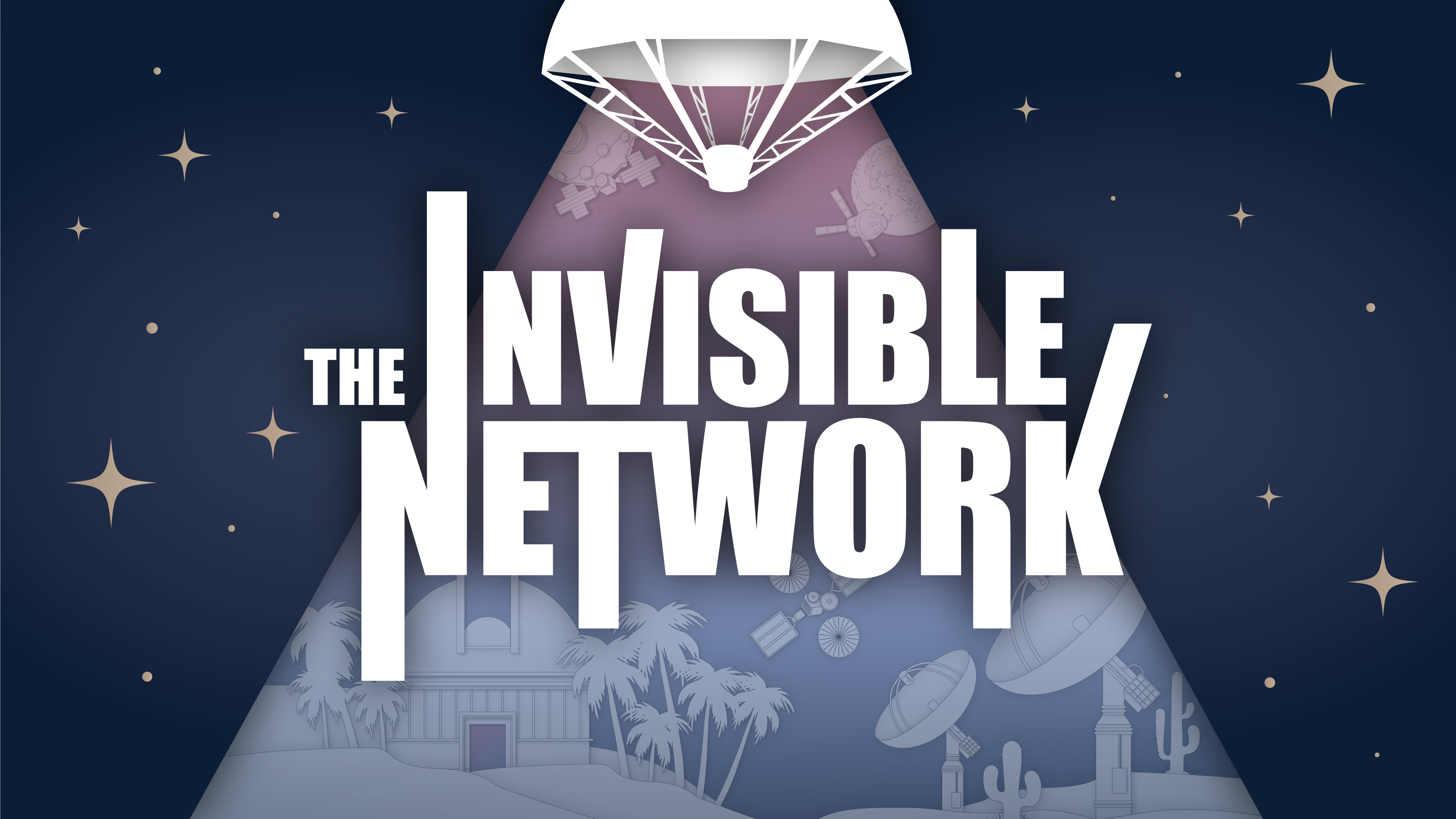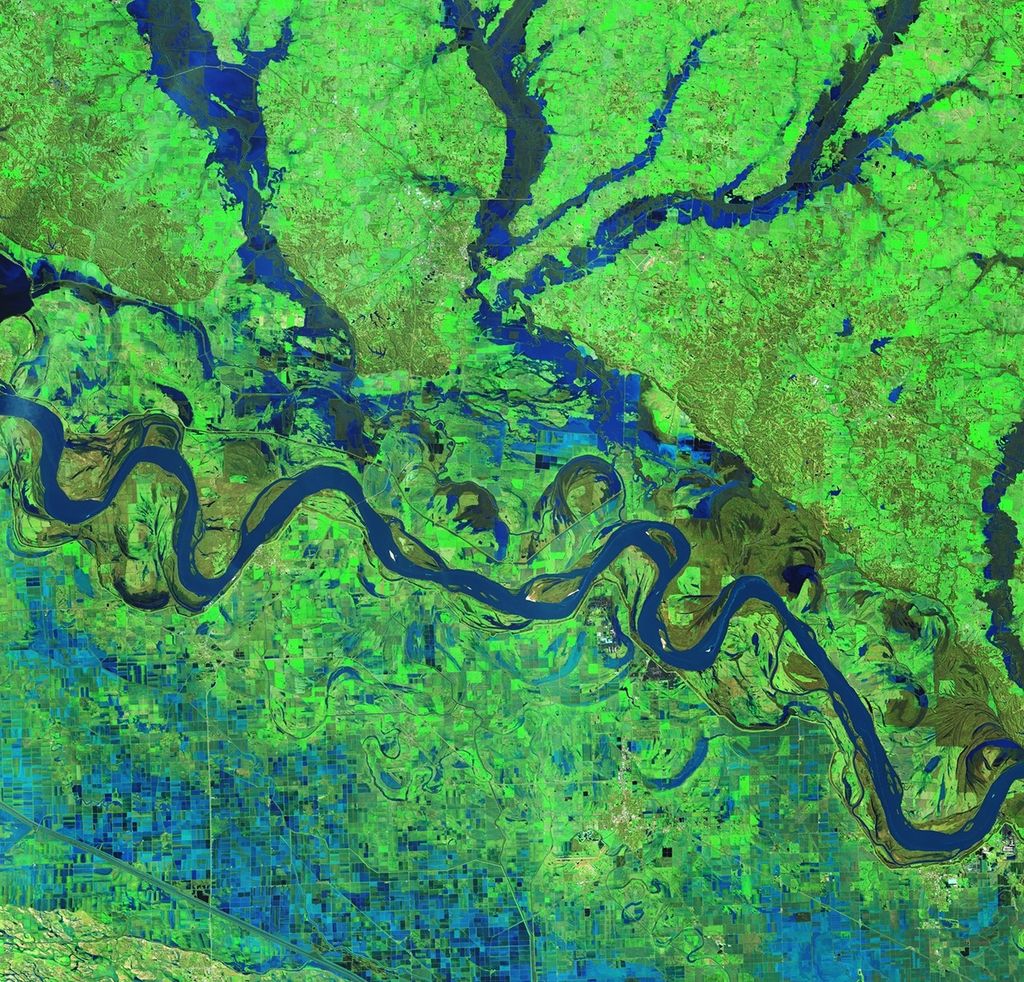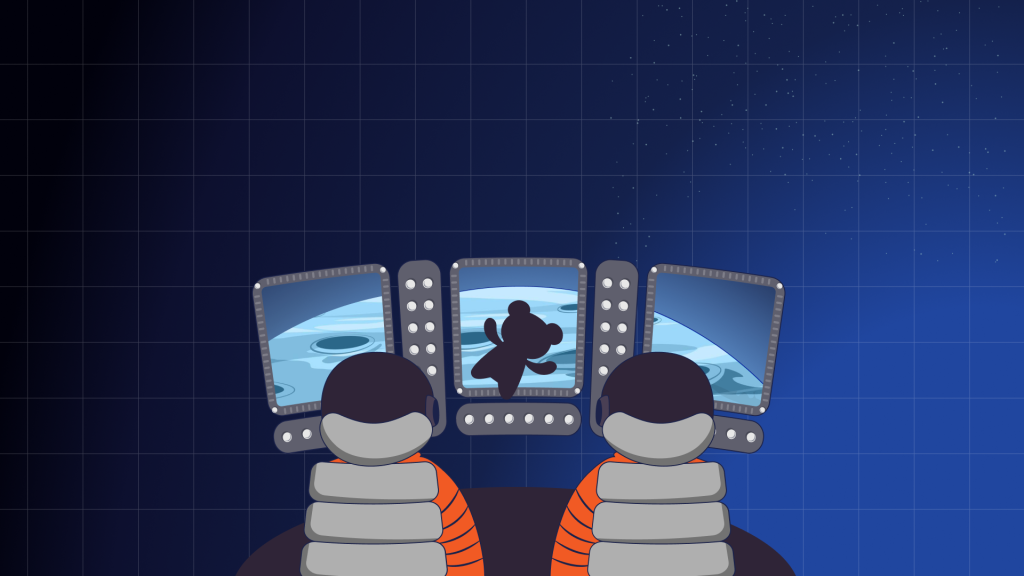
NARRATOR
Interns are empowering the next generation of NASA innovation.
The Space Communications and Navigation program, or SCaN, at NASA Headquarters in Washington oversees much of NASA’s communications and navigation infrastructure and technology development portfolio. They also take responsibility for developing the future communications and navigation workforce, growing the skills of the young innovators who will support NASA, industry, and academia well into the future.
The crown jewel of SCaN’s workforce development efforts is the SCaN Internship Project, or SIP, which connects students with NASA mentors to perform work of real benefit to the agency. SIP provides supplementary events and programming that enhance the overall NASA internship experience. SIP plans professional development workshops, valuable networking opportunities, and events that foster fellowship among interns.
This summer, continuing to follow NASA guidance during the COVID-19 pandemic, SIP adjusted its programming so that participants across the county could work virtually toward their goals. Though SIP has looked different during the pandemic, interns still had opportunities for engagement and interpersonal growth.
In this episode, you’ll meet 10 of SIP’s 2021 summer interns, based at three different NASA centers: NASA Headquarters in Washington, D.C., NASA’s Glenn Research Center in Cleveland, Ohio, and NASA’s Goddard Space Flight Center in Greenbelt, Maryland. We’ll learn about the contributions they’re making to the agency and hear about their unique backgrounds.
I’m 2021 SIP intern Bronson Christian. This is “The Invisible Network.”
…
NARRATOR
We begin at NASA Headquarters, home of SCaN program executives and leaders. They’re envisioning and realizing the future of space communications and navigation capabilities.
NARRATOR
2021 Headquarters intern Monica Saraf joins SIP for a third summer. She’s a current student at Purdue University in Indiana. Her summer project concerns migrating network data to the cloud.
MONICA SARAF
NASA… has been using a lot of stuff locally. So, it doesn’t really go through the cloud. It’s harder to reach that data and save that data. And — especially because there’s so much data that NASA uses that comes from satellites — my product is helping ease up the load on ground stations and move things into an area where it’s easy to access from anywhere.
NARRATOR
Outside her work with the cloud, Monica is interested in cybersecurity and cyber-forensics. Specifically, she’s interested in information security for medical devices. When not working:
MONICA SARAF
I love to dance. And I have a variety of different types of dances that I like to learn and kind of just grow my experience there… I actually am classically trained in an Indian dance called Bharatanatyam. It’s a South Indian classical dance that a lot of people really don’t do or see around here…
So for Bharatanatyam… we have something called Aramandi, which is where you sit down and your knees are formed into like a diamond shape kind of pointed outwards into the two corners of the room. So we have like these different positions that we also kind of follow. And we focus more on angles, and crispness, and trying to portray stories through our dances. So there’s a lot of facial expressions and a lot of different eye movements, and hand movements, and foot movements that kind of follow the stories that we’re telling.
NARRATOR
Kevin Cabral joins SCaN at NASA Headquarters from North Carolina State University, where he studies industrial systems engineering. He spent his summer working on a video game experience for SCaN’s network integrity team. The game is meant to communicate the importance of cybersecurity and SCaN’s effectiveness in securing NASA data.
KEVIN CABRAL
I’ve never done game development before. This summer is actually a first for me. I tend to like to throw myself into internships where I have no idea what I’m doing so that, by the end of it, I come out with a ton of lessons learned, because that’s kind of — in my opinion — the point of an internship. And if I can demonstrate to the people that I’m working for and working with that I am driven, and I want to figure things out, and I have the know-how to figure out how to figure those things out — I think that that leaves, you know, a good impression on people.
NARRATOR
Outside of his work as an engineer, Kevin also has a career as a voice actor:
KEVIN CABRAL
What’s fascinating about voice acting is generally when you get to do something… in an animation or a big character role, that’s kind of something special, because for the most part, you’re doing stuff like commercials for your local HVAC company. That’s where, you know, most of your work comes in. And so, I’ve done a lot of tech-related advertisements, and interior promotions, and that sort of thing…
I do a lot of Star Wars voices and impressions, though. So I’ve been really, really grateful to voice people like the Mandalorian, Anakin Skywalker, Obi Wan Kenobi, Luke Skywalker, Han Solo, Moff Gideon, the list goes on. But it’s a really fun treat when you get an email from somebody who is like, “Hey, I saw your Mandalorian voice on social media, you know, do you want to do it?” It’s like, “of course I do.” Like, “This is great.”
I’ve been a Star Wars super fan for most of my life. And so – being able to dip my toes in a little bit of Star Wars animation here and there – it’s been really neat.
…
NARRATOR
From Headquarters, we head to Ohio and NASA’s Glenn Research Center. Glenn develops advanced communications and navigation technologies and concepts for SCaN, innovating in areas like laser communications, artificial intelligence, commercialization, and more.
NARRATOR
Adrian Whitehurst joins the SIP 2021 cohort at Glenn from Clark Atlanta University, where he majors in computer science.
ADRIAN WHITEHURST
I’m open to data science, machine learning, anything A.I.-related — deep learning. I feel like the further I progress in my studies in school stuff, I feel like I’ll be able to really… specify more of what direction I want to go. But right now I’m kind of just testing the waters in different… fields.
NARRATOR
Adrian joins SIP as a veteran of nine years of service in the U.S. Air Force. A highlight of his time in the military was a year spent in South Korea.
ADRIAN WHITEHURST
It was really great. The culture is amazing. The foods even better. K-BBQ is unmatched. So if you ever get a chance and come across K-BBQ, you have to get some Korean barbecue in the system.
NARRATOR
Adrian’s work this summer focuses on technologies for ground communications systems. Specifically, he’s contributing to performance testing for various waveform applications.
ADRIAN WHITEHURST
My project is complex. It’s different. It’s challenging. It’s not anything I’ve learned up until this point. And I think that’s the most interesting part about it.
NARRATOR
Glenn intern Nathan Dixon attends Cleveland State University, where he majors in computer science with a minor in mathematics. Specifically, he focuses on artificial intelligence and scientific simulations.
NATHAN DIXON
Since I sat down in front of a computer at like – I want to say – five years old, and started playing video games, I was like, “this would be cool. I want to make one of these.” So I tried to do programming at like five years old, and you can imagine how that went. But that love of computers kind of stuck. And then as I got more into high school, that definitely fleshed out into something where I was like, “Oh, this is actually something you can do, and go to school for. Wow.” So that’s kind of how I got sucked into that.
NARRATOR
This is Nathan’s second internship with NASA. As a local to the Cleveland area, he’s always had Glenn Research Center in mind.
NATHAN DIXON
During my interview, my mentor asked, “So why do you want to work at NASA?” And in my head I was like, “that’s a really dumb question. Why wouldn’t you want to work at NASA? It’s NASA?”
NARRATOR
For his summer project, Nathan worked on a project called MATRICS:
NATHAN DIXON
MATRICS is an acronym: Multiple Access Testbed for Research in Innovative Communications Systems. And what it is — very broadly — is: we have a couple awesome robotic arms in an anechoic chamber — so no radio gets in or out, and nothing bounces around, it just stops. Kind of like a sound booth, but for radio waves. We stick antennas on the end of them, and we hook up our software-defined radios to them. And we can simulate — we’re working on being able to simulate — pretty much any communications link that NASA as an organization would want to observe.
This summer, we’re working on doing some validation. So we’re looking at some test flights that were done back in 2016, over the Sandusky area. And we’re checking our data from our communications link to make sure it matches up with the actual physical data that we have.
NARRATOR
Kaya Jones joins Glenn Research Center as a recent graduate from East High School in Memphis, Tennessee.
KAYA JONES
So like, my parents — the first thing they say to people when… we’re out or… they’re on the phone with their family friends. They will say, “Yeah, Kaya, she’s interning at NASA.” I’m like, “Mom, you don’t have to say that every time we meet someone.” I’m like, “Come on. Come on guys.” But they’re like, really excited. They’re really proud of me, and I’m just really glad that I can do this — put a smile on their faces.
NARRATOR
For her summer project, Kaya is drafting documentation that will help users better access their data, making sure that it’s on a common platform, easily accessible to missions. After this summer, she’ll be moving to Chicago for college, where she’ll be majoring in computer science and playing basketball. After that, she might do grad school or work in tech, but for now:
KAYA JONES
In the meantime, I’d just like to gain as much experience as I can… And also just grow my network. So, as people say, “network is your net worth.”
NARRATOR
Our final Glenn intern for the episode is Lauren Scotta, a graduate of Ohio University’s Scripps College of Communication. She’s an experienced educator with extensive classroom and administrative experience. For her summer project, she’s working with Glenn’s outreach team to develop activities and curricula that engage younger students with NASA’s mission through Science, Technology, Engineering, Art, and Math education — commonly referred to as STEAM.
LAUREN SCOTTA
I think students are our future. You know, as cliche as that sounds, it’s very true. And one statistic that has always stuck with me — and why I’m so STEM- and STEAM-driven — is, especially for young girls, if they do not really have an interest or an excitement for science or math by fourth grade, chances are they’re not going to go into that field just because they don’t feel that connection with it.
Having had that opportunity to especially teach first, second, and third grade, that’s something that I really tried to promote, that you can do so much. Because I think back to when I was younger, had I had more of those experiences, perhaps I would have been an engineer or had a different trajectory for myself. So I want to make sure that they have all the options — all students — to really see how we can use this for the future.
…
NARRATOR
Leaving Glenn Research Center, we return to the East Coast. NASA’s Goddard Space Flight Center is home to NASA’s Near Space Network, which provides mission-critical communications and navigation services through a blend of government and commercial infrastructure. Goddard also develops new network capabilities, nurturing innovation from infancy to infusion into agency missions.
NARRATOR
We begin with Korine Powers, who plays a unique role as an extern, an intern in service to other interns. She lends her skills as a writer, communicator, and educator, helping to elevate intern projects and the summer experience overall through individualized support, professional development events, and products that showcase intern work.
KORINE POWERS
I see myself very much as a humanities advocate… There’s a huge push that’s been amazing for diversity in STEM: like adding more women to STEM, adding more people of color to STEM. You know how important STEM is. And I love that.
But I think like the other thing that can get lost, is the original value of the liberal arts education, or the idea that communication, critical thinking, presentational skills — like you need to not only be able to do this amazing engineering or math work — you also need to be able to like show that to people…
So that’s where I see my role. It’s very much just getting to be an advocate for humanities in a place where the humanities might not seem to belong.
NARRATOR
Korine joins SIP from Boston University, where she is a doctoral candidate in literature.
KORINE POWERS
My thesis is on neurotic masculinity. I am tracing the path towards a kind of neurotic generic type from the cowboy to the serial killer in fiction and film…
I do mostly actually pulp literature. There are some foundational things there — like David Foster Wallace comes up a whole lot when you talk about neurotic masculinity — but I’m really interested in the pulp and the popular. So it tends to be stuff that is kind of trashy and then of course, the films that go with it. But yeah, the Hannibal Lecter series as texts and then also as films are very much within my oeuvre.
NARRATOR
Caroline Fedele joins Goddard as a part of the summer 2021 intern cohort from the University of Florida, having recently graduated from the University of North Florida.
CAROLINE FEDELE
I started out in mechanical engineering, and they kind of sold that to me as, “Oh, you can get a great job and you don’t need to go to grad school.” And the first year I was there, I ended up switching to physics because I was so much more interested in understanding the “why” in the mathematics and the theory behind things… outside of just doing them in the machine shop. And so from that point, I knew I want to go to grad school. I didn’t know what I wanted to go to grad school for — and that switched from physics to computer science.
NARRATOR
Caroline is part of the Pathways program, which establishes long-term internships meant to prepare students for a career with NASA. This summer, Caroline is working on quantum computing and networking, a burgeoning effort that will offer NASA a host of benefits, including rendering space communications virtually un-hackable.
CAROLINE FEDELE
There’s something called superposition, entanglement, quantum tunneling: these weird random things that, if anyone’s ever taken a quantum mechanics class, they’ll remember that being kind of a highlight. But we want to use that for our benefit to solve problems that regular computers can’t. So, for example, there’s probably the most famous… problem that launched quantum computing to the spotlight is security. And computers are secured with something called RSA encryption, which is based on a hard mathematical problem that regular computers would take millions or billions of years to solve. And quantum computers, in theory, can solve this problem in minutes or hours. So, that poses a huge problem for security and that launched people’s interest in quantum computing.
So, what we’re looking at is understanding, “Okay, what’s the mathematics and the physics behind quantum computing that allows it to be so much more powerful? How can we program these computers once they exist on a larger scale, probably in the next 10 to 20 years? And also, how can we further our own encryption methods and our own computer security to be inherently secure against these quantum computers?” So, that’s the bulk of what I’ve been working on with my team.
NARRATOR
Jeffery Greer joins SIP at Goddard from Mississippi State University, where he’s studying electrical engineering with a special interest in artificial intelligence and autonomous capabilities. This is his fourth internship with NASA, but his first as a part of SIP. He joins NASA with the support of the Mississippi Space Grant Consortium.
JEFFREY GREER
I didn’t really have a big interest in space when I was younger. So, I never really thought of NASA. But once I started, I really enjoyed it and kept coming back…
I actually had a mentor during high school… and he told me about NASA [internships]. He said it’d just be good to help narrow down what type of — if you know you want to do engineering — help you to learn what type. Because it’s not just aerospace engineering work, there’s all types of people to make projects go…
All of my internships have been different, and focused on something different. And it’s helped me narrow down exactly what I wanted to do, and what I don’t want to do.
NARRATOR
This summer, Jeffery is working on an autonomous navigation program. Spacecraft equipped with this technology would be able to make navigation adjustments onboard, rather than waiting for instructions from Earth. This will save navigation engineers time and will also be extraordinarily useful for missions far from Earth, where the communications delay can be minutes to hours.
JEFFERY GREER
I guess what most excites me is that: this is completely new to me. I’m not used to anything related to aerospace. So being able to hop in with my electrical engineering knowledge from college, and then trying to apply things that I understand from there and learning new concepts for this interdisciplinary thing I’m doing, is it’s been exciting — exciting the whole time.
NARRATOR
Bryan Chantigian spent his summer working on enabling technologies for optical communications, a revolutionary new capability offering missions higher data rates over infrared lasers. Bryan joins SIP from the University of Minnesota, Twin Cities.
BRYAN CHANTIGIAN
I graduated with an electrical engineering major and an astrophysics minor, and I’m continuing on to do electric, getting my master’s in electrical and computer engineering this coming year.
NARRATOR
For Bryan, electrical engineering is a family affair:
BRYAN CHANTIGIAN
I think the first time the idea was put into my head was because of my grandpa. He was an electrical engineer, and he worked at GE for a number of years. And I thought about that and I was like, “Man, that sounds that sounds interesting.” And so I started. I got on my high school robotics team, and I was the electrical lead because nobody did electrical… I was basically just putting the board together and stuff like that.
NARRATOR
As for a career in space, that was also inspired by family:
BRYAN CHANTIGIAN
My dad, he had this little telescope and he would always bring it out. He loves looking at the stars and stuff… He’s like, “Oh, I got Jupiter, you can come out and see Jupiter.” So we’d all run down and look at the telescope and look at Jupiter — whatever he had in telescope at that point in time. We were always super excited whenever he would bring out the telescope…
And one year he took me to space camp in Alabama — in Huntsville — and it was just super fun. I loved it. And I was like, “You know what, I think I want to work for NASA. So I mean, here we are now.”
…
NARRATOR
SCaN’s summer 2021 interns have risen to the challenge of the virtual workplace, delivering powerful innovations that support SCaN’s strategic goals. With their mentors, interns have made meaningful contributions to agency initiatives across a wide variety of disciplines.
Looking forward, some will continue on as interns in the fall. Some will join the NASA workforce as civil servants or contractors. Others will move into industry or academia, evangelizing SCaN’s mission outside the agency. All have left their mark on NASA.
Are you interested in making your mark at NASA? Check out intern.nasa.gov
…
NARRATOR
This episode of “The Invisible Network” debuted in July of 2021 for National Intern Day. The podcast is produced by NASA’s Space Communications and Navigation program, or SCaN, out of Goddard Space Flight Center in Greenbelt, Maryland. The episode was written and recorded by me, Bronson Christian, with editorial support from Danny Baird and Katherine Schauer. Our public affairs officer is Lora Bleacher of Goddard’s Office of Communications.
Special thanks to Barbara Adde, SCaN Policy and Strategic Communications director, SIP intern coordinators across the agency, and all those who have lent their time, talent, and expertise to making “The Invisible Network” a reality. Be sure to rate, review, and follow the show wherever you get your podcasts. For transcripts of the episode, visit NASA.gov/invisible. To learn more about the vital role that space communications plays in NASA’s mission, visit NASA.gov/SCaN.


























